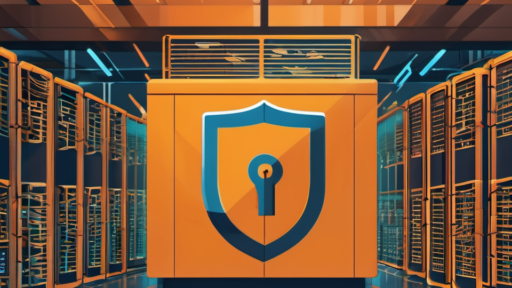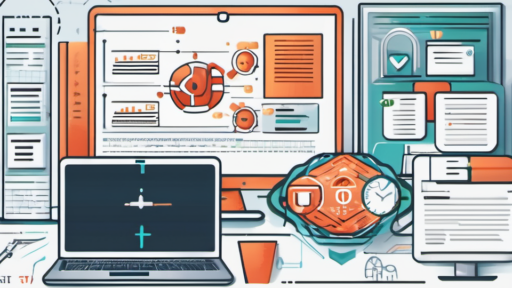Tired of Security Headaches? This One Trick Can Change Everything
Let’s be real, keeping your data safe is a never-ending struggle. Hackers are getting smarter, security threats are more complex than ever, and the stakes keep getting higher. You’re probably feeling the pressure.
But here’s the good news: you’re not alone. There are powerful strategies to fight back. In fact, there’s one secret weapon that can transform your security posture, and you might be surprised it’s not a fancy new tool. It’s a mindset shift.
Ready to discover how to move beyond just reacting to threats and proactively build a future-proof defense? Keep reading.
Forget About “Security Products.” It’s Time to Embrace “Security as a Service”
You’ve heard it before: security solutions and risk mitigation strategies are essential for success. But that’s often where the conversation ends, leaving you wondering, “What exactly should I be doing?”
The old way of thinking about security involved a patchwork of separate products, each trying to address a single threat. It was clunky, inefficient, and often led to gaps in your defenses.
That’s why it’s time to ditch the product-centric approach and embrace a more holistic view: Security as a Service (SaaS). This revolutionary paradigm goes beyond traditional point solutions, offering a comprehensive and flexible way to manage your entire security infrastructure.
Think of it like this: Instead of hiring an individual to handle your plumbing, electrical, and HVAC needs, you have a team of experts who oversee it all. SaaS security is like having that all-encompassing team for your digital world.
What Makes “Security as a Service” So Powerful?
Flexibility and scalability: SaaS is adaptable. You can easily adjust your security needs as your business evolves, ensuring you always have the right tools and coverage.
Expert managed service: Ditch the tech jargon and tedious maintenance. With SaaS, experts handle everything, giving you peace of mind and freeing up your team for strategic initiatives.
Cost optimization: Pay for what you need, as you need it. Say goodbye to expensive upfront investments in software or hardware that might not even address your evolving needs.
Choosing the Right “Security as a Service” for Your Needs
Finding the ideal SaaS provider can be overwhelming. Consider these factors:
1. Comprehensive Protection: The best providers offer a multi-layered approach to security, protecting against threats like data breaches, malware attacks, insider threats, and cyber espionage all in one platform.
2. User-Friendly Platform: You need a solution that is simple and intuitive. The last thing you want is a complex system that creates more problems than it solves.
3. Ongoing Support: Technical support and proactive monitoring should be included in the service. You don’t want to be stuck navigating the solution on your own when you need it the most.
4. Reputation: Do your research and choose a provider with a strong track record in security and compliance. Look for industry certifications and customer testimonials.
5. Flexibility: Select a provider that allows you to customize your plan, adjust the service level, and choose the right set of features to meet your specific needs.
Moving to a SaaS security model isn’t just about buying software. It’s about establishing a long-term partnership that enables you to truly own your digital security destiny.
Embracing a Proactive Security Mindset: Moving Beyond Just Protection
Traditional security measures often focus on building strong walls and detecting breaches after they occur. However, a proactive approach goes much further. It’s about anticipating risks, proactively hardening your defenses, and staying one step ahead of attackers.
This is where the power of predictive security comes into play.
The Power of Predictive Security: Think Like a Hacker
It’s not about waiting for the enemy to attack and then reacting. It’s about understanding their motives and methods. This is where predictive security is critical:
-
Understand your vulnerabilities: Cybersecurity assessments, penetration testing, and vulnerability scanning can help identify your weaknesses before attackers find them.
-
Embrace automation: Artificial intelligence and machine learning can automate many aspects of threat detection, enabling faster identification and response.
-
Don’t just patch, predict: Use predictive security to anticipate emerging threats and vulnerabilities, rather than just reacting to known problems.
-
Think outside the box: The best security professionals are creative thinkers who are always trying to outsmart the bad guys. By adopting a proactive mindset, you can develop the same agility and foresight.
The Value of a “Security Culture”
A proactive mindset can only go so far without the right support. That’s why establishing a robust security culture is crucial:
-
Invest in employee training: Educate your employees about best practices for password security, social engineering, and other potential attack vectors.
-
Foster a culture of reporting: Encourage your employees to report suspicious activity, even if it seems small.
-
Embrace accountability: Create a system of checks and balances to ensure everyone is adhering to security protocols.
-
Celebrate success: Don’t just focus on failures. Celebrate security achievements to reinforce the importance of proactive efforts.
Moving from a reactive to a proactive security mindset requires a paradigm shift in the way you approach security.
It’s about embracing a culture of innovation, continuous improvement, and always staying one step ahead of the curve.
The Future of Security: Building a Strong and Sustainable Fortress
The battle for cyber security is an ongoing one. There’s no silver bullet. It’s about continuous learning, constant adaptation, and leveraging the latest technologies and strategies.
Here are a few key takeaways to remember as you build your proactive security roadmap:
1. Invest in “Security as a Service”: It’s the most efficient way to leverage expert guidance and advanced technology, allowing you to focus on core business functions.
2. Think Like a Hacker: Understand the threats and vulnerabilities, adopt a predictive approach, and implement preventive measures.
3. Build a Robust “Security Culture”: Empower employees to be the first line of defense through education, open communication, and clear accountability.
4. Stay Curious and Engaged: Technology is evolving rapidly, so keep up-to-date on the latest threats and solutions. Continuously assess your security posture, adapt your defenses, and proactively innovate.
By embracing a proactive, forward-thinking approach, you can transform your organization into a resilient digital fortress that’s ready to face any challenge.






